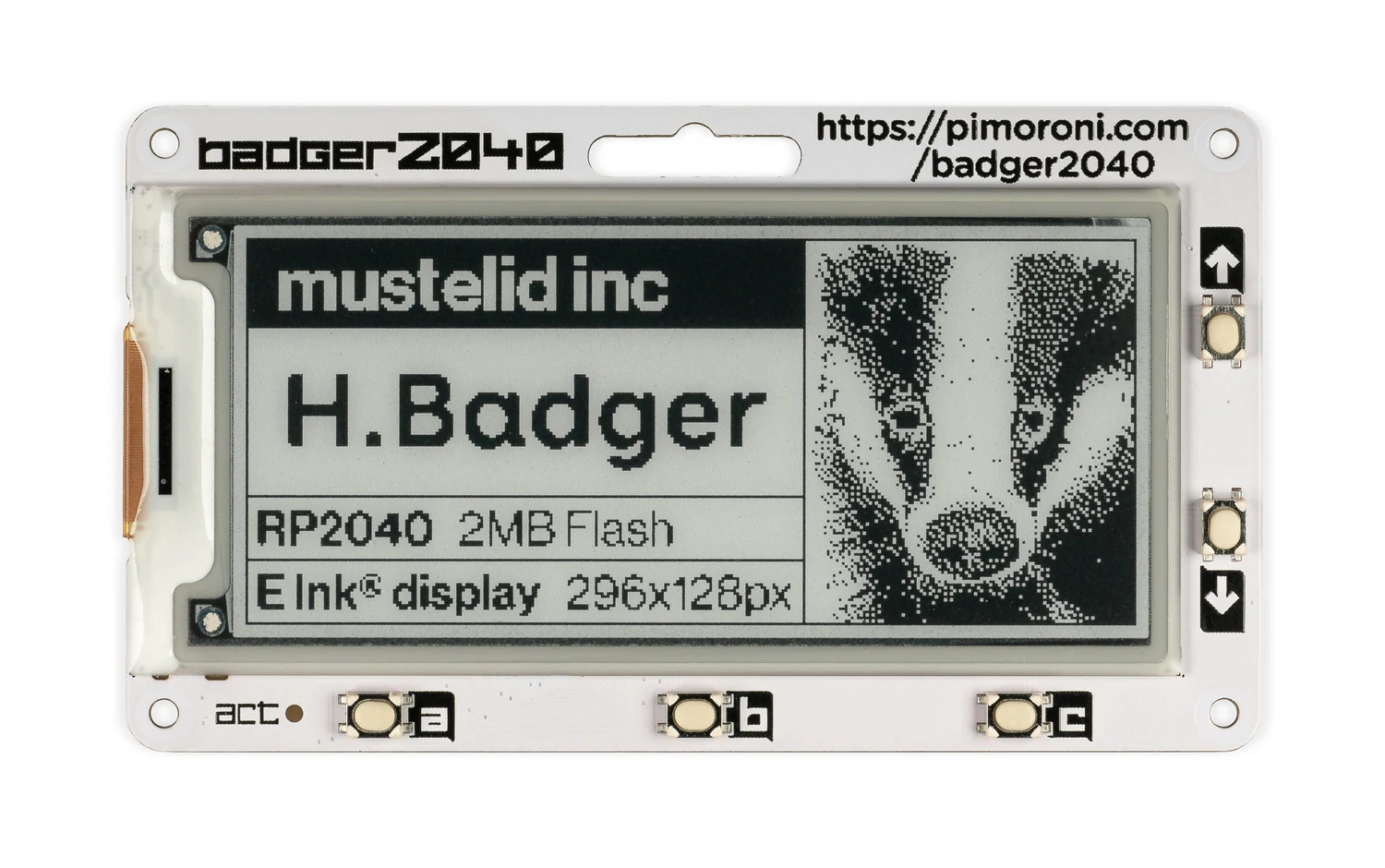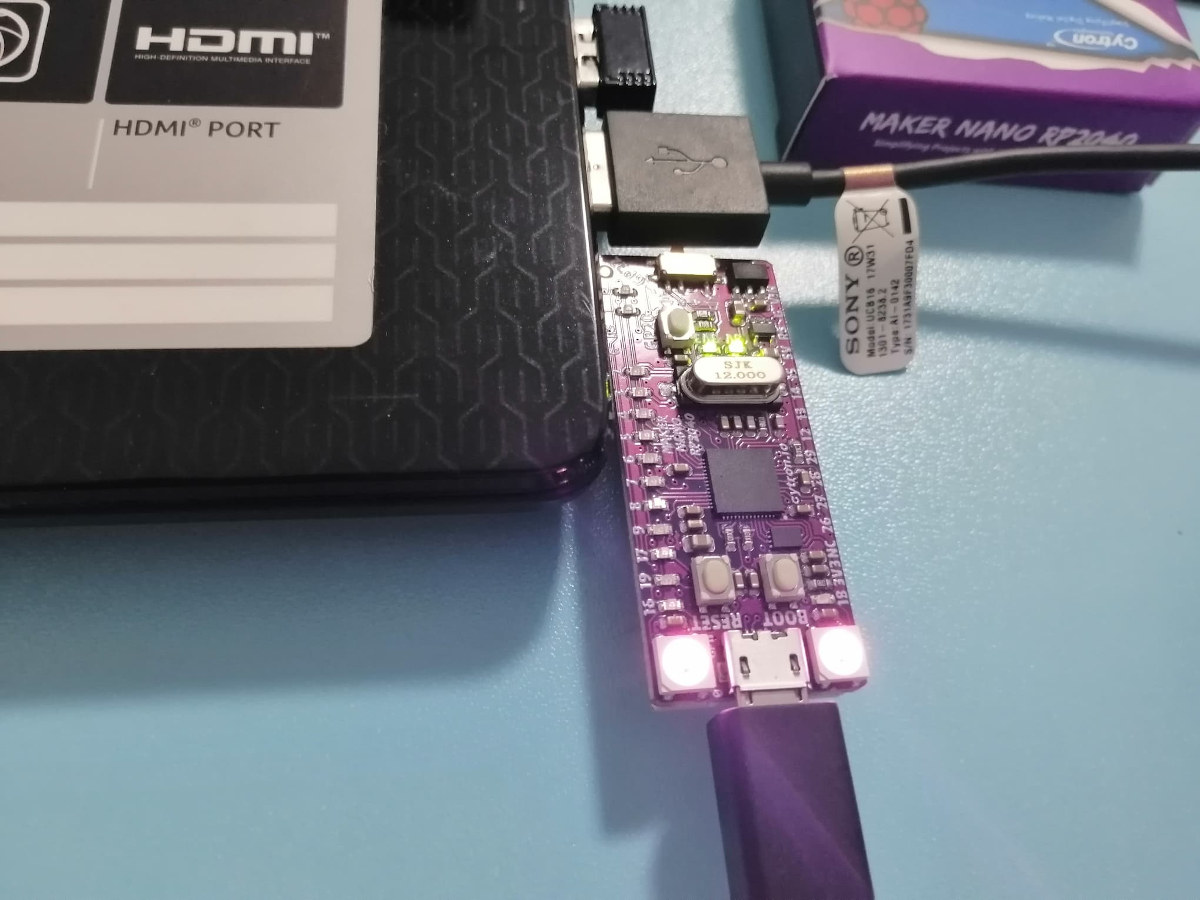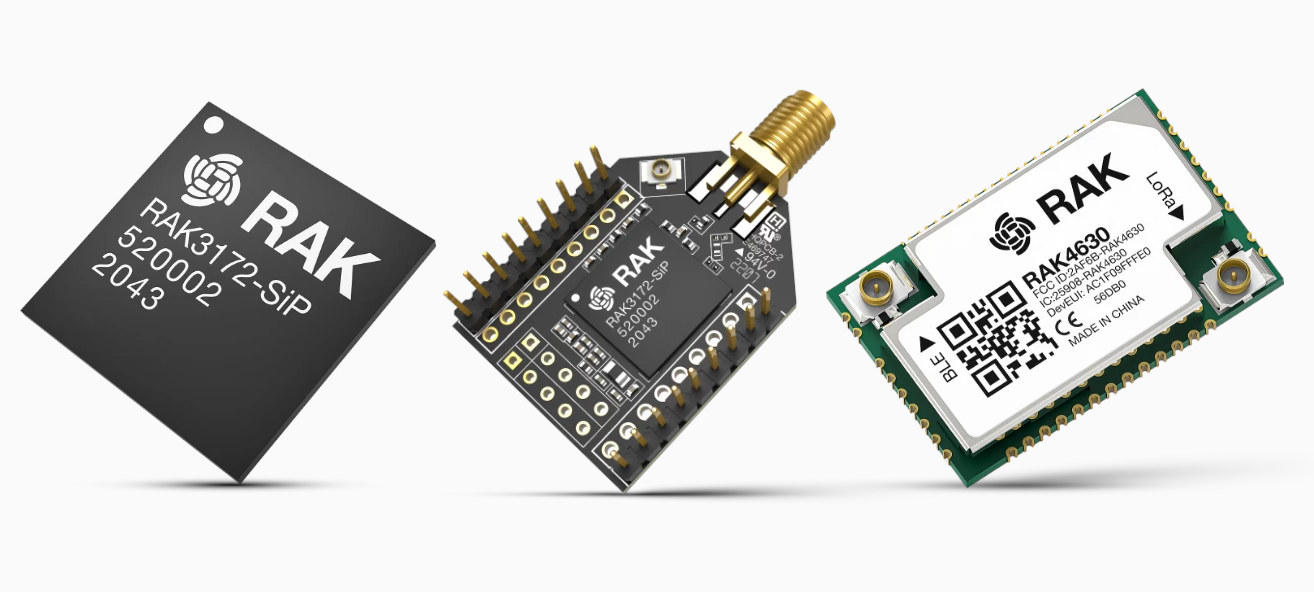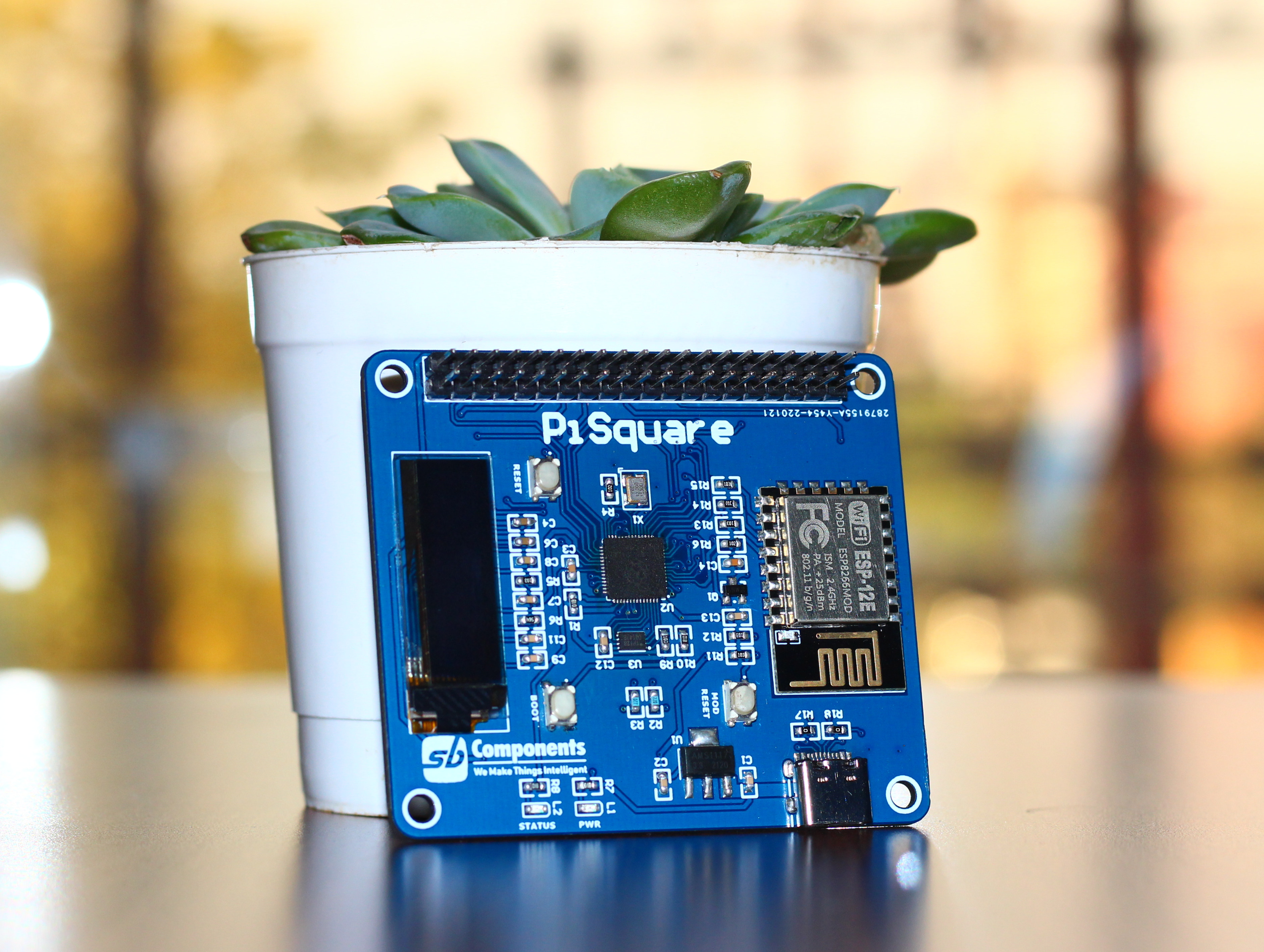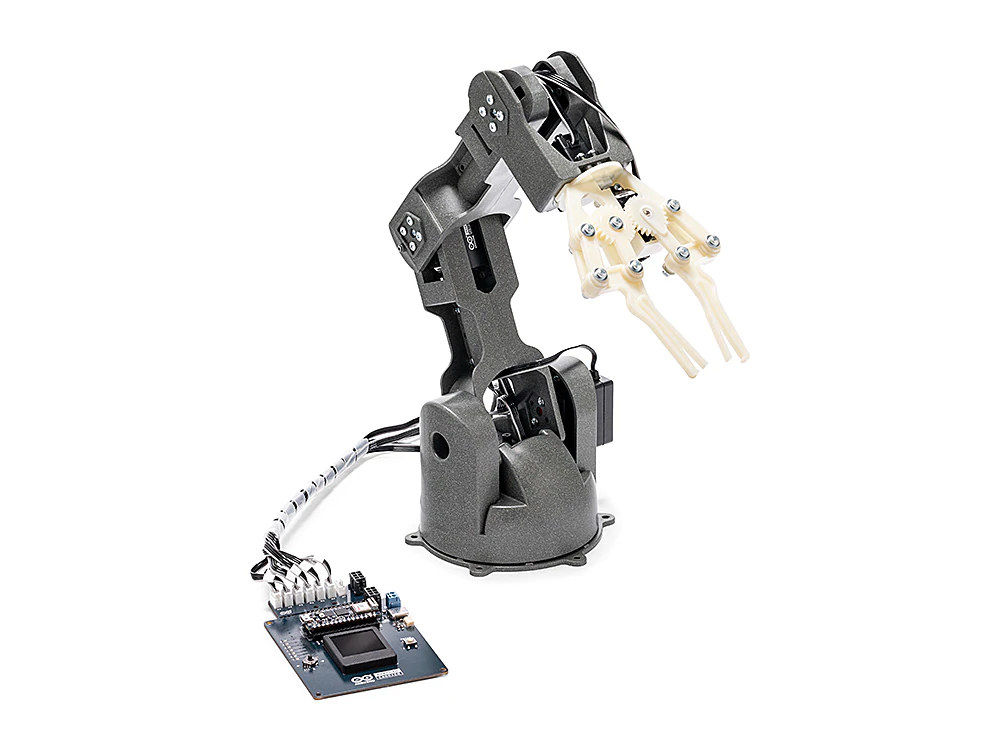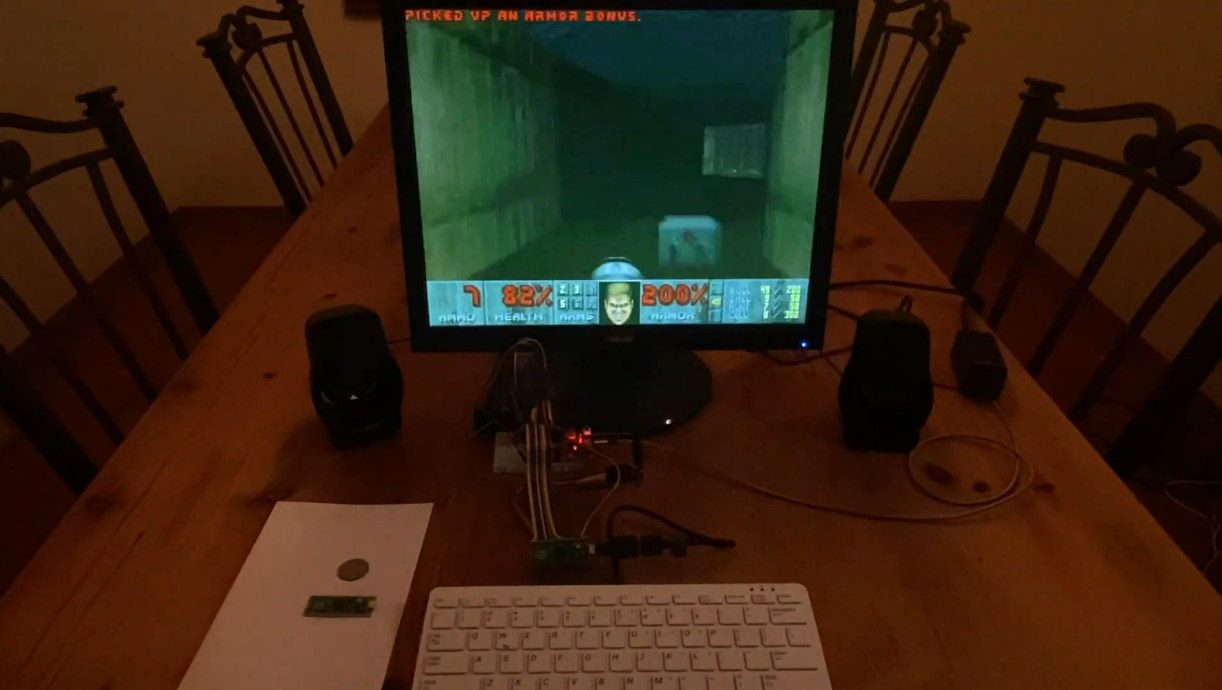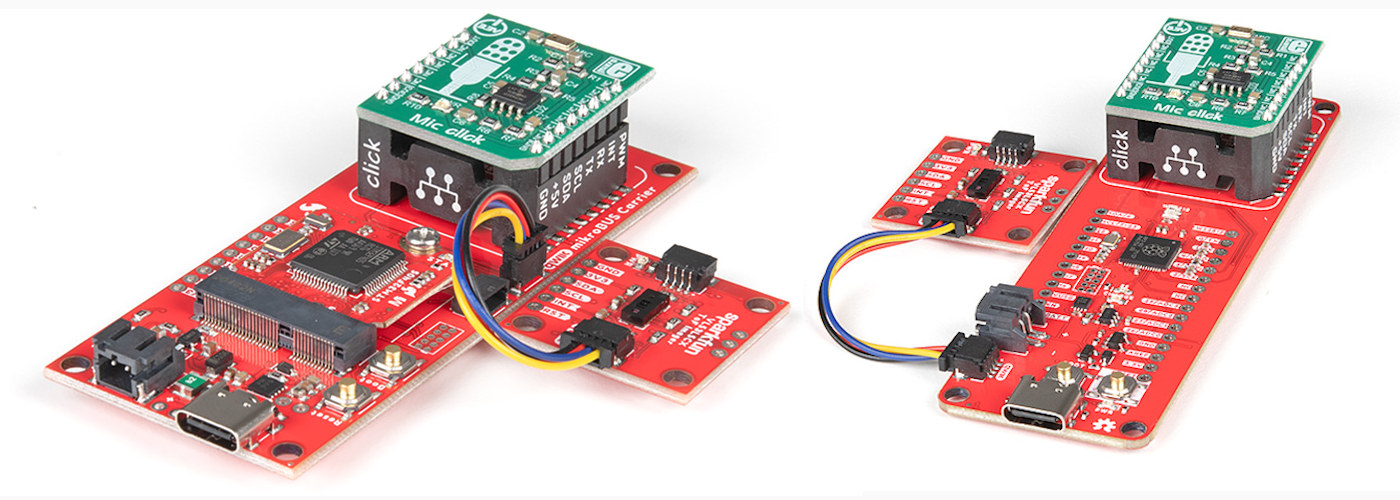Pimoroni Badger 2040 is a Raspberry Pi RP2040 board equipped with a 2.9-inch black and white E-Ink display with 296 x 128 resolution and programmable with C/C++, MicroPython, or CircuitPython. The board is not just an ePaper badge, as it also comes with five buttons, and expansion capability through a Qwiic/STEMMA QT connector plus some pads with UART, I2C, interrupt, and power signals. Badger RP2040 specifications: MCU – Raspberry Pi RP2040 dual-core Arm Cortex M0+ running at up to 133Mhz with 264kB of SRAM Storage – 2MB QSPI flash Display – 2.9-inch B&W E Ink display with 296 x 128 pixels resolution, ultrawide viewing angles, ultra-low power consumption; Dot pitch – 0.227 x 0.226 mm USB – 1x USB Type-C port for power and programming Expansion Qwiic/STEMMA QT connector 10 pads with I2C, an interrupt pin, UART, SWC/SWD, 3.3V, GND Misc 5x front user buttons Reset and boot buttons (the […]
LilyGO T-PicoC3 board merges RP2040 & ESP32-C3, integrates color display
LilyGO T-PicoC3 is a small development board combining Raspberry Pi RP2040 dual-core microcontroller with ESP32-C3 RISC-V MCU to add WiFi and Bluetooth LE connectivity and adds a 1.14-inch color display to the mix, plus several I/Os. We had previously other designs merging ESP32 and RP2040 with UDOO KEY, Arduino Nano RP2040 Connect, or the Pico Wireless Pack among others, but as far as I know, the T-PicoC3 board is the first to use Raspberry Pi RP2040 and ESP32-C3 RISC-V processor. LilyGO T-Pico3 specifications: Microcontrollers Raspberry Pi RP2040 dual-core Cortex-M0+ MCU with 264 KB of embedded SRAM Espressif Systems ESP32-C3 RISC-V processor with WiFi 4 and Bluetooth 5.0 LE connectivity Storage – 4MB SPI flash connected to RP2040 Display – 1.14-inch full-color IPS LCD Display (ST7789V SPI controller) with 240 x 135 resolution USB – USB Type-C port for power and programming (RP2040 / ESP32-C3) Expansion – 15-pin + 12-pin expansion […]
Getting started with Maker Nano RP2040 using CircuitPython: Blinky, RGB LED, and Piezo Buzzer
CNXSoft: This getting started guide was initially posted in Thai language by Suthinee Kerdkaew, and I’ve just translated her work into English with some minor edits. As discussed in an earlier article, Maker Nano RP2040 is a board following the Arduino Nano form factor, but with a more powerful Raspberry Pi RP2040 microcontroller. The board also comes with plenty of LEDs, as well as two RGB LEDs, and a piezo buzzer for audio output. Mr. Jean-Luc Aufranc has just given me a Maker Nano RP2040 board received from Cytron for review. I’ve never used a board before, so it’s my first experience, and in this article, I’ll try to program Maker Nano RP2040 with CircuitPython with three demos: a blinky sample, changing the color of the RGB LEDs, and playing a melody through the piezo buzzer. Let’s see if I can do it. Let’s get started. I first downloaded the […]
RAKwireless adds more Wisduo and Wisblock modules, launches WisToolBox configuration tool for IoT devices
RAKwireless have launched several Wisduo wireless modules, a dozen of Wisblock modules for IoT prototyping, updated WisDM, WisGateOS, and RUI3 software, and introduced WisToolBox mobile/desktop configuration tool for IoT devices as part of their spring launch 2022 even entitled “Empowering the Innovators: Making IoT your own”. Three new Wisduo modules RAK3172-SIP WisDuo SIP based on STM32WLE5 Wireless SoC with LoRa connectivity. Compared to the original RAK3172, it offers more IO pins, integrates a TCXO, and comes in a smaller size. The module supports LoRa P2P and complies with Class A, B, & C of LoRaWAN 1.0.3 specifications. Cost: $5.99. WisDuo RAK3272-SiP – That’s a breakout board for the RAK3172-SiP System-in-a-Package module for LoRaWAN and allows easy access to all pins via 2.54mm pitch headers. RAK4630 WisDuo Stamp Module – This module supports both LoRa/LoRaWAN and BLE 5.0, and comes with RUI V3 (RUI3) firmware. It can be deployed as an […]
PiSquare enables wireless Raspberry Pi HAT control though ESP8266 and RP2040 MCUs (Crowdfunding)
SB Components PiSquare is a board following the Raspberry Pi HAT form factor, and based on Raspberry Pi RP2040 microcontroller & ESP-12E Wireless module in order to control multiple Raspberry Pi HATs wirelessly without stacking them on their Raspberry Pi. The PiSquare uses Socket programming to control multiple Raspberry Pi HATs wirelessly, and for instance, you could connect multiple HATs with SPI or UART without the expansion boards conflicting with each other since the physical interface is handled by the Raspberry Pi RP2040 on each PiSquare connected over WiFi (ESP8266) to the Raspberry Pi SBC. PiSquare hardware specifications: MCU – Raspberry Pi RP2040 dual-core Cortex-M0+ microcontroller @ up to 133 MHz Storage – 16Mbit SPI flash Display – 0.91-inch OLED display Connectivity – 802.11b/g/n WiFi 4 via ESP-12 (ESP8266) module USB – 1x USB Type-C port 40-pin header and form factor compatible with the official Raspberry Pi HATs Power Supply […]
Arduino Braccio++ robotic arm is designed for high-school and university students
Arduino Education has just launched the Braccio++ robotic arm for advanced students in high school or at university in order to let them experiment with a 6 DOF, industrial, assembly line-inspired robot. The new robotic arm provides an upgrade to the Tinkerkit Braccio robot and has been designed to assist in teaching real-world manufacturing techniques,topics such as physics and robotics, and concepts like motions, forces, torque, gear ratio, stability, and weight of payload. The Arduino Braccio++ is comprised of the Braccio carrier board equipped with an Arduino Nano RP2040 Connect that controls six Arduino RS485 Smart Servo Motors with specifically four SR418D servo motors for the arm joints, and two SR312 servo motors for the claw. Four lessons and two projects are included in the kit, and it’s made for up to three students. Arduino says the new robotic arm is made of recycled and eco-friendly materials with the […]
Doom ported to Raspberry Pi RP2040
Doom has been ported to all sorts of platforms, including ESP32 platforms with 4MB PSRAM but “RP2040 doom” port of Doom to the Raspberry Pi RP2040 is more challenging, since RAM is limited to the measly 264KB built-in into the microcontroller, and for boards with only 2MB flash like the Raspberry Pi Pico, storage capacity becomes an issue. But Graham Sanderson solved all those issues by compressing the data, changing the code to use less RAM, making full use of the two Arm Cortex-M0+ cores, both overclocked at 270 MHz, in order to run Doom (DOOM1.WAD) on Raspberry Pi Pico at 320×240 resolution @ 60 fps, and the full Ultimate Doom and DOOM II WADs expected to fit into Raspberry Pi RP2040 boards with 8MB SPI flash. The port was based on Chocolate Doom, OPL2 emulation for audio support was derived from the emu8950 project, and sound effects were compressed […]
SparkFun Raspberry Pi RP2040 & MicroMod boards take mikroBUS Click expansion boards
We’ve previously written articles about boards featuring the mikroBUS interface supporting thousands of Click expansion boards from Mikroelectronika, and now the company has collaborated with Sparkfun who launched MicroMod and Raspberry Pi RP2040-based boards with a mikroBUS socket, plus Qwicc connectors. Raspberry Pi RP2040 is the well-known dual-core Arm Cortex-M0+ microcontroller found in Raspberry Pi Pico and a range of third-party boards, while Sparkfun MicroMod‘s are M.2 MCU modules with chips from Microchip, Nordic Semi, Ambiq, Espressif Systems, and NXP. Sparkfun RP2040 mikroBUS development board specifications: MCU – Raspberry Pi RP2040 dual-core Cortex M0+ microcontroller up to 133 MHz with 264 KB SRAM Storage – 16MB QSPI flash, MicroSD card socket (on the bottom side) USB – USB Type-C port Expansion mikroBUS Socket 2x Qwiic connectors Thing Plus (or Feather) pin form factor with 18 GPIO pins including up to 4x 12-bit ADC, up to 8x 2-channel PWM, up to […]


